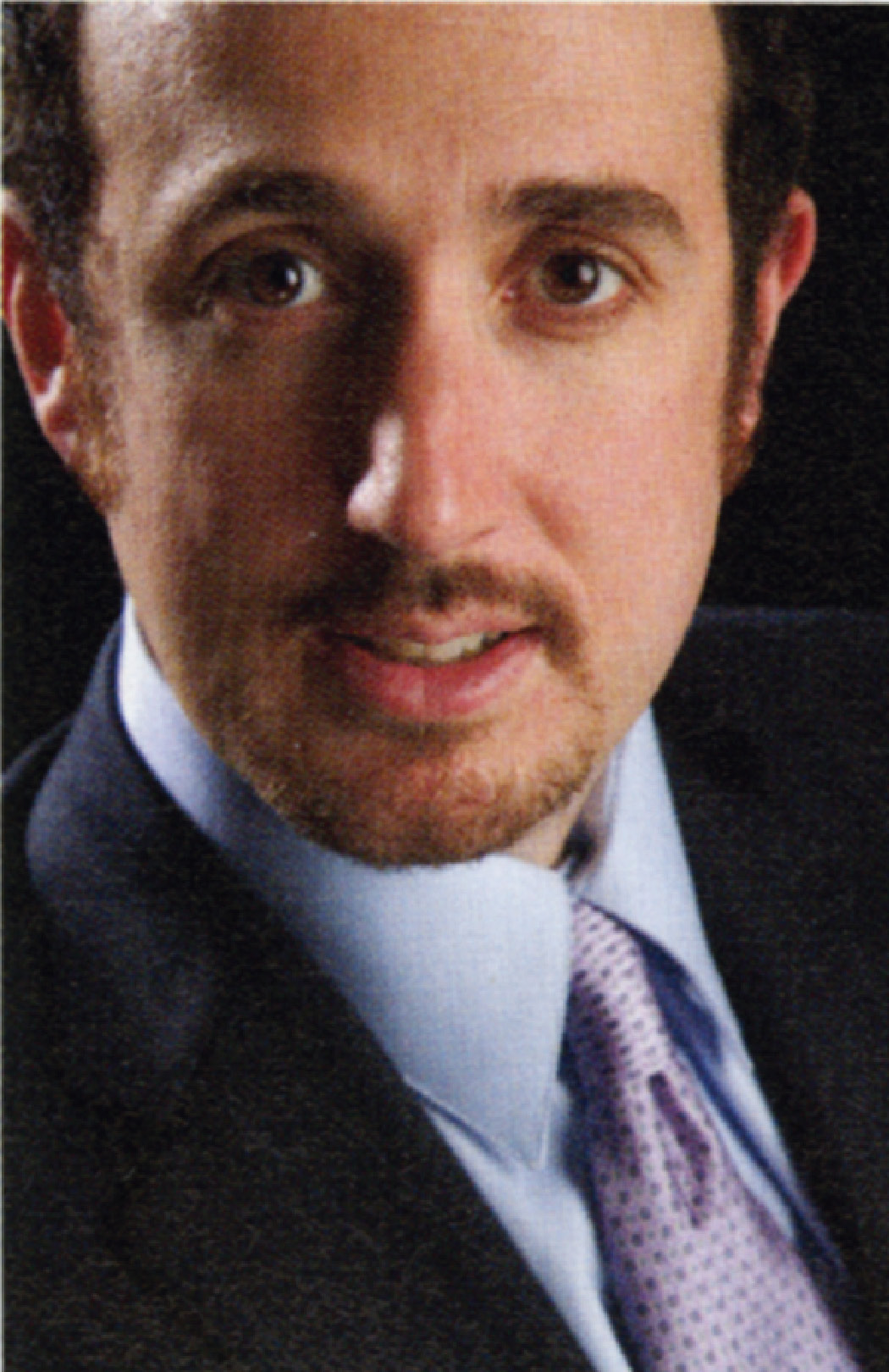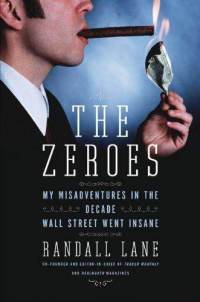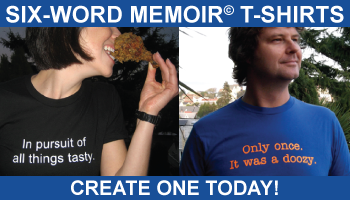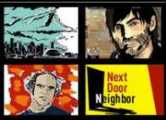Interview: Randall Lane, author of The Zeroes: My Misadventures in the Decade Wall Street Went Insane
Thursday, July 22nd, 2010
“I’ve never been money-driven. But I saw [Trader Monthly] as a way to do what I love–journalism–and maybe do well and be successful financially. I thought I could have it both ways.”
Few journalists this side of Truman Capote have entered the writing business with aspirations of eating fois gras canapés and drinking 18-year Chivas in the grand ballroom of the Mandarin Oriental hotel, surrounded by throngs of models and multimillionaires. Randall Lane certainly didn’t. But in November of 2004, when Lane and his business partner launched Trader Monthly, a magazine for Wall Street’s biggest rainmakers (motto: “See it, make it, spend it”), they found themselves surrounded by profligacy in all its forms–$175 hamburgers topped with black truffles, $10,000 Carl F. Bucherer watches, $6,000 lap-dance sessions at the Penthouse Executive Club. Suddenly, Lane had a front-row seat for the financial industry’s golden era of shameless spending and unchecked egos.
This era–and its sudden, crushing end during the economic collapse of 2008–is the subject of Lane’s new memoir, The Zeroes: My Misadventures in the Decade Wall Street Went Insane. Beginning with the creation of Lane’s company, Doubledown Media, and ending with Doubledown’s 2009 bankruptcy filing, The Zeroes is part voyeuristic wealth-gawking, part cultural preamble to the economic collapse, and part personal memoir. In funny, biting detail, Lane recounts his run-ins with Wall Street tycoons like John Paulson and Jim Chanos, celebrity charlatans like artist Peter Max and outfielder-turned-stockpicker Lenny Dykstra, and Senator John McCain, whom Lane sees embarking on a gambling bender in a Puerto Rican casino. But Lane–editor-at-large at The Daily Beast–also turns his gaze inward, describing how he was seduced by Wall Street’s big-spending culture, why he failed to anticipate the economic downturn, and how it felt to lose five years (and more than half a million dollars, mostly his own) on a failed magazine empire.
I caught up with Lane over lunch at Manhattan’s Spotted Pig.
 When did you decide to write a memoir?
When did you decide to write a memoir?
After Doubledown blew up, my mom told me, “These stories are crazy. You have to write a book.” And after I made peace with the fact that I’d be exposing myself completely, I started to think she was right. From 2004 until 2009, I received 43,000 e-mails and sent 20,000, so I had this complete record of everything that happened in the Trader Monthly days: What people were drinking, what they wore to parties–my entire life was chronicled. The book was reconstructed, in large part, from the contents of those e-mails.
How did you convince your publisher that this would be different from the hundreds of other books about the Wall Street collapse?
I’m a journalist by training, but I was on the inside of Wall Street. There are a lot of great books about the collapse–Andrew Ross Sorkin’s Too Big To Fail, Bill Cohan’s House of Cards–and these guys call everyone up, get all the details, and rebuild what happened. “What did Hank Paulson say to Tim Geithner?” But nobody was writing about the culture. And the culture of Wall Street is just as important for figuring out how we got to where we are.
In addition to examining the culture of Wall Street, this book is also surprisingly personal. Did you pitch it as a memoir, or did it morph into one as you wrote?
My publisher always liked the idea of a personal story to drag people through the narrative–it was the special sauce that no other book about the era had. But I’m a trained third-person journalist. I don’t have a blog, and I’m naturally uncomfortable putting “I” into a sentence. I had to learn as I went along.
You weren’t rich growing up, but you’ve spent a lot of time around money. [Lane’s childhood home was next-door to the Rockefeller estate, and he had an early job at Forbes, where he spent most of his time compiling the Forbes 400 list of America’s wealthiest people.] Was it hard to be close to all that wealth and yet be struggling with your own finances?
We all make our choices in life, you know? I’ve never been money-driven. But I saw [Trader Monthly] as a way to do what I love–journalism–and maybe do well and be successful financially. I thought I could have it both ways.
Everyone in your book is crazy. You’ve got John McCain and his craps habit, Lenny Dykstra and his profane late-night phone calls, Peter Max and his One-Plus-Three scheme [in which Max would paint a commissioned portrait as an inseparable four-panel polyptych, offering to sell the whole piece to the subject for four times the original price.] Did you deal with any sane people?
Not in the last couple of years! And that’s why the book is in three parts. In 2004, I was dealing with sane people. And then the boom happened, and the crazy people came out of the woodwork. In 2007, traders were making hundreds of millions of dollars a year, and ordinary people were taking double mortgages on their houses. And then in 2009, everything fell apart. I was experiencing personally what was going on in the country at large.
 What was your writing process like?
What was your writing process like?
I had a tight deadline, so I wrote weekends in my Daily Beast office, at night after the kids went to sleep, Starbucks, the library. For a couple weeks in the middle of winter, I went to a friend’s house in Sag Harbor and locked myself inside for a week. I didn’t leave the entire time, like Jack Nicholson in The Shining.
Who came up with the cover design?
That was my publisher’s idea. I thought their concept was great. I only changed two things about it. First, the guy they originally had on the cover had a soul patch. I told them, “I’ve met 20,000 guys on Wall Street, and not one has had a soul patch.” Second, the guy in their design was burning a $1 bill, and I told them, “I appreciate your budgetary reasons for doing that. But if you want to portray what Wall Street was really like, you have to have him burn a hundred.”
There’s an amazing scene in the book where you’re standing in the Jewelry District trying to sell a box of $3,000 watches that were given to Doubledown as promotional swag, and you’re being offered 5, 10 cents on the dollar, and it’s so clearly indicative of how bad things have gotten in America at large and how doomed your company is. And then, as you’re standing there with the box of watches feeling sorry for yourself, it starts to rain.
[Laughs.] Trust me, if the point of this book was to redeem myself and whitewash my mistakes, I wouldn’t have included that scene.
But that’s also the point at which you began to feel guilty about your indirect involvement in the greed-driven Wall Street boom. Did you ever have a pang of conscience during the boom itself?
The idea of Wall Street in the Zeroes was rich guys trading with other rich guys. There were no victims. These were all grown-ups with plenty of money. When Amaranth [a legendary failed hedge fund] lost $8 billion, nobody felt bad for them. It was only when I saw too late the damage that Wall Street was inflicting on Main Street that I felt like I’d been part of something dirty.
Has Main Street’s increased scrutiny of Goldman Sachs and other big firms changed Wall Street culture forever?
The money’s still there, it’s still just as big, but you don’t see people flaunting it. You used to be proud of spending $100 on a shot of Johnny Walker Blue, but now that’s seen as excessive, even on Wall Street. Today, buying a 20,000-square-foot Greenwich mansion would be rubbing it in people’s faces. In the Zeroes, that was part of the culture.
It’s coming back though. As the economy improves, these guys will start spending like crazy again.
And when they start spending again, what will you do?
Oh, I’ll laugh.
Finally, Randall Lane, what’s your Six-Word Memoir?
Serial entrepreneur. Sometimes write for food.
+++
BUY The Zeroes: My Misadventures in the Decade Wall Street Went Insane.
VISIT the book’s Facebook page.
FOLLOW Randall Lane on Twitter.






[...] http://www.smithmag.net/memoirville/2010/07/22/interview-randall-lane-author-of-the-zeroes-my-misadv... [...]
Hey I truly savored studying your net . The content had been fairly educational. Thank by yourself thus considerably!
What a great interview! Randall Lane is a nice person. I will post this interview right https://samedaypaper.org/blog/apa-format here on my website.